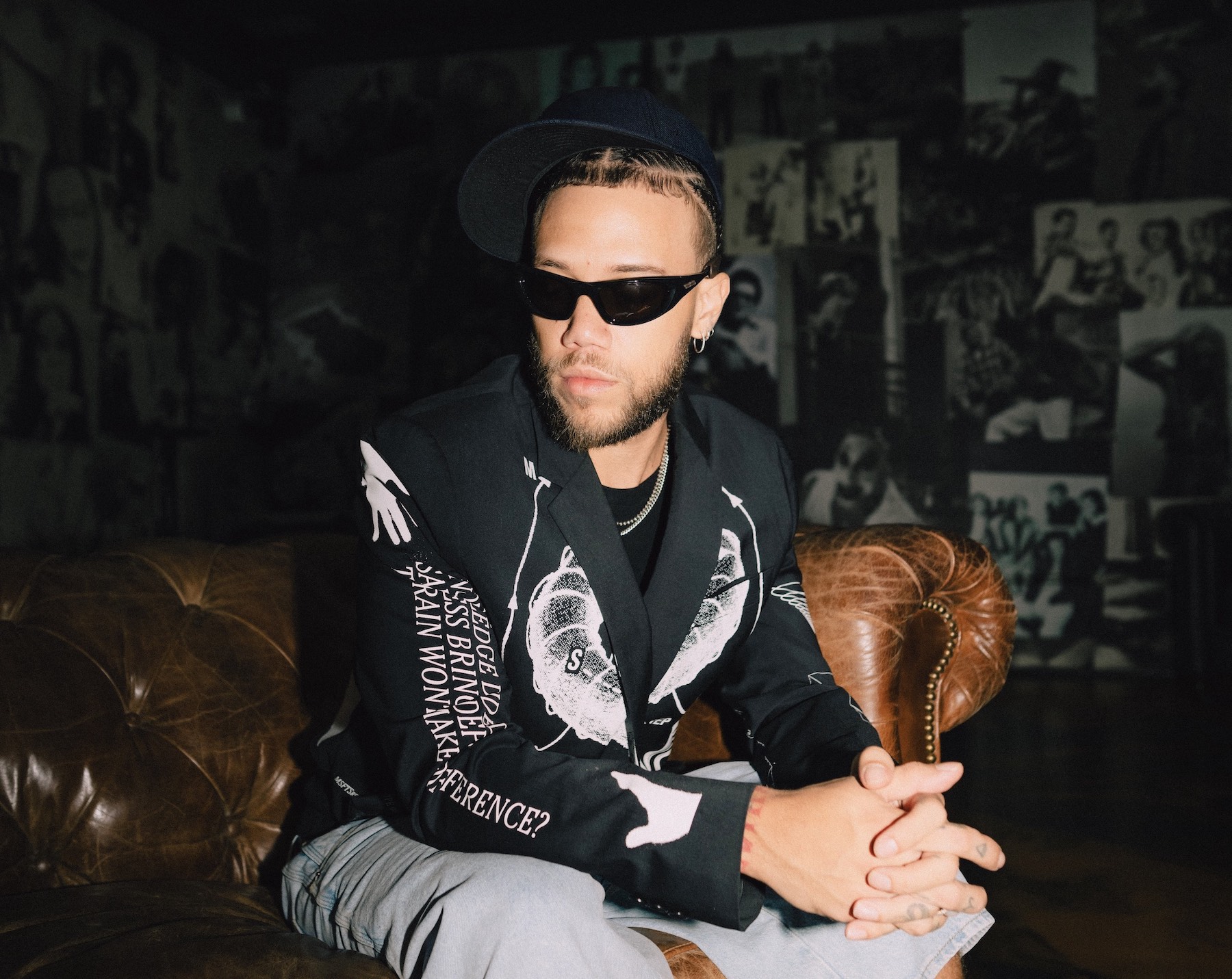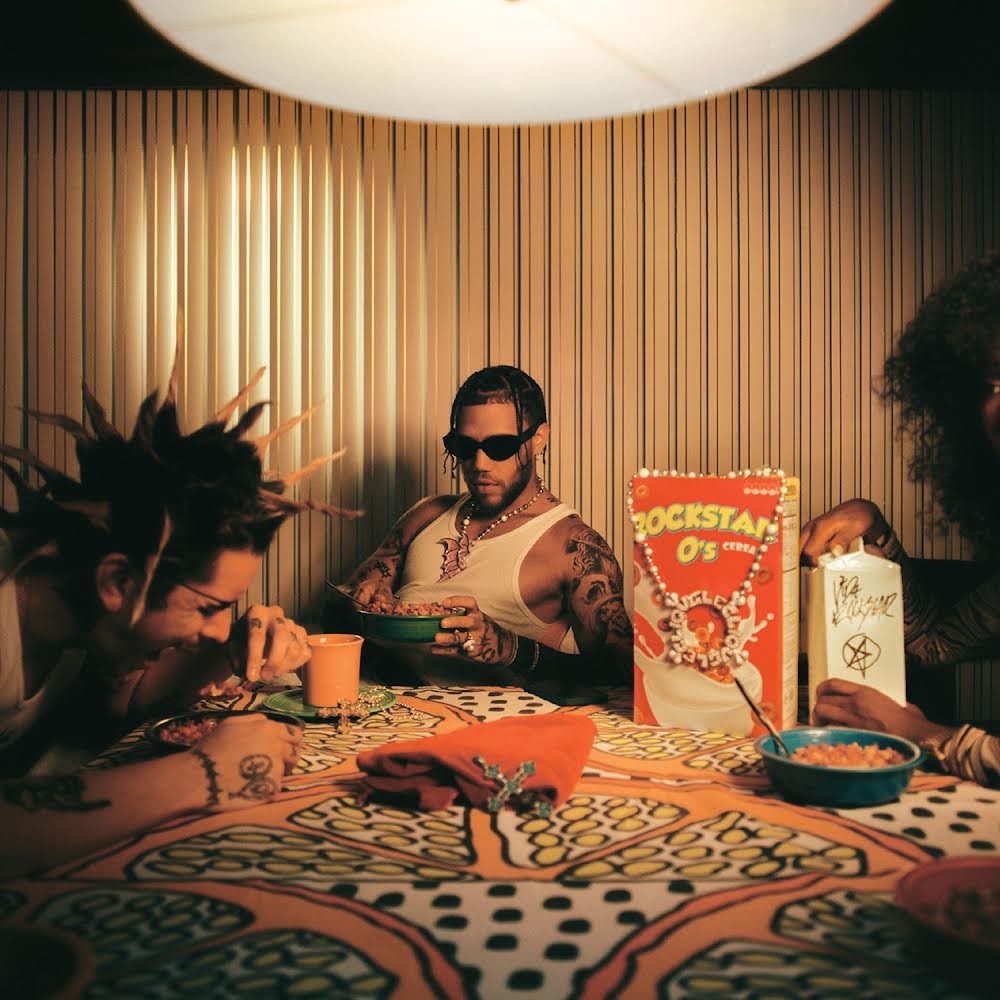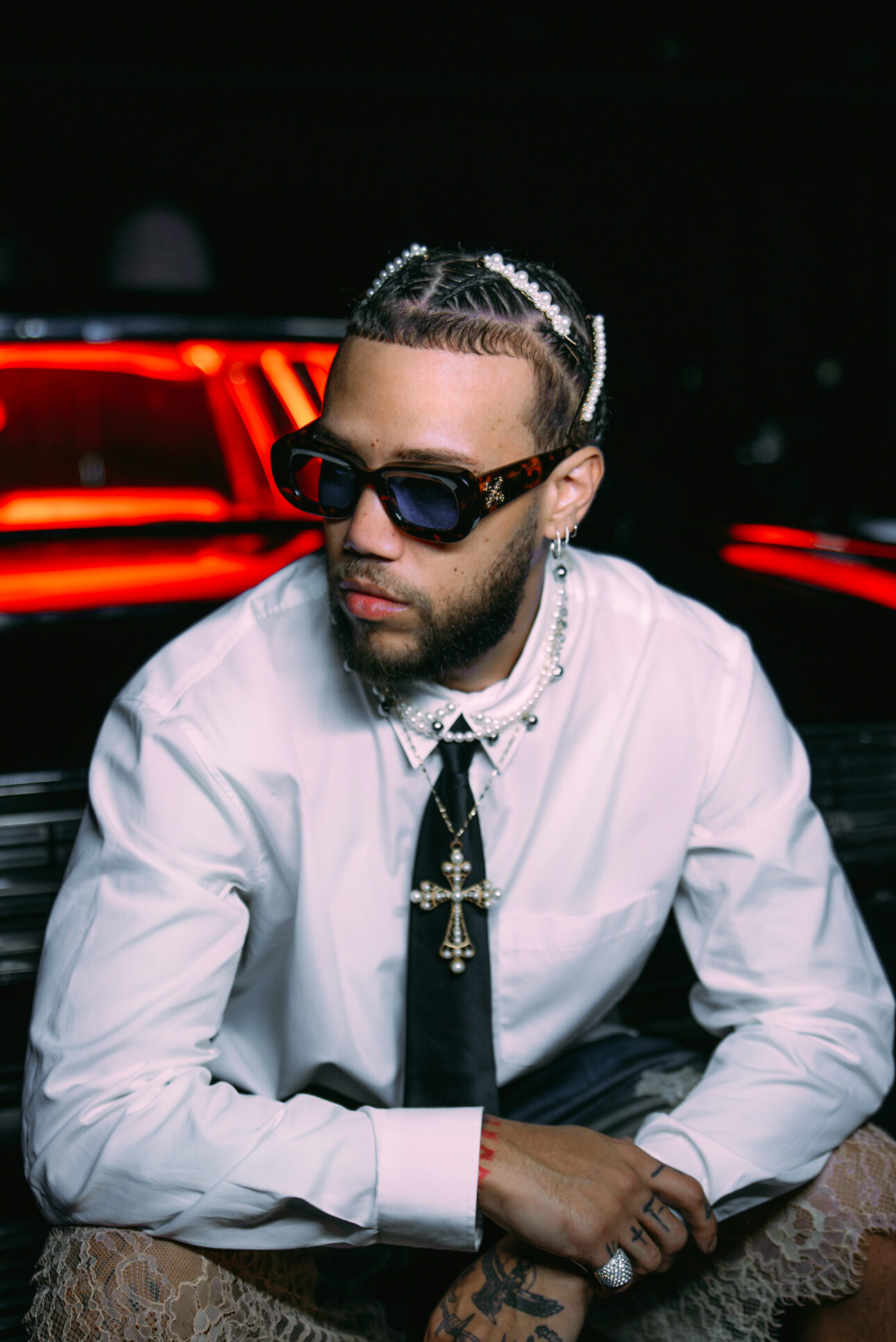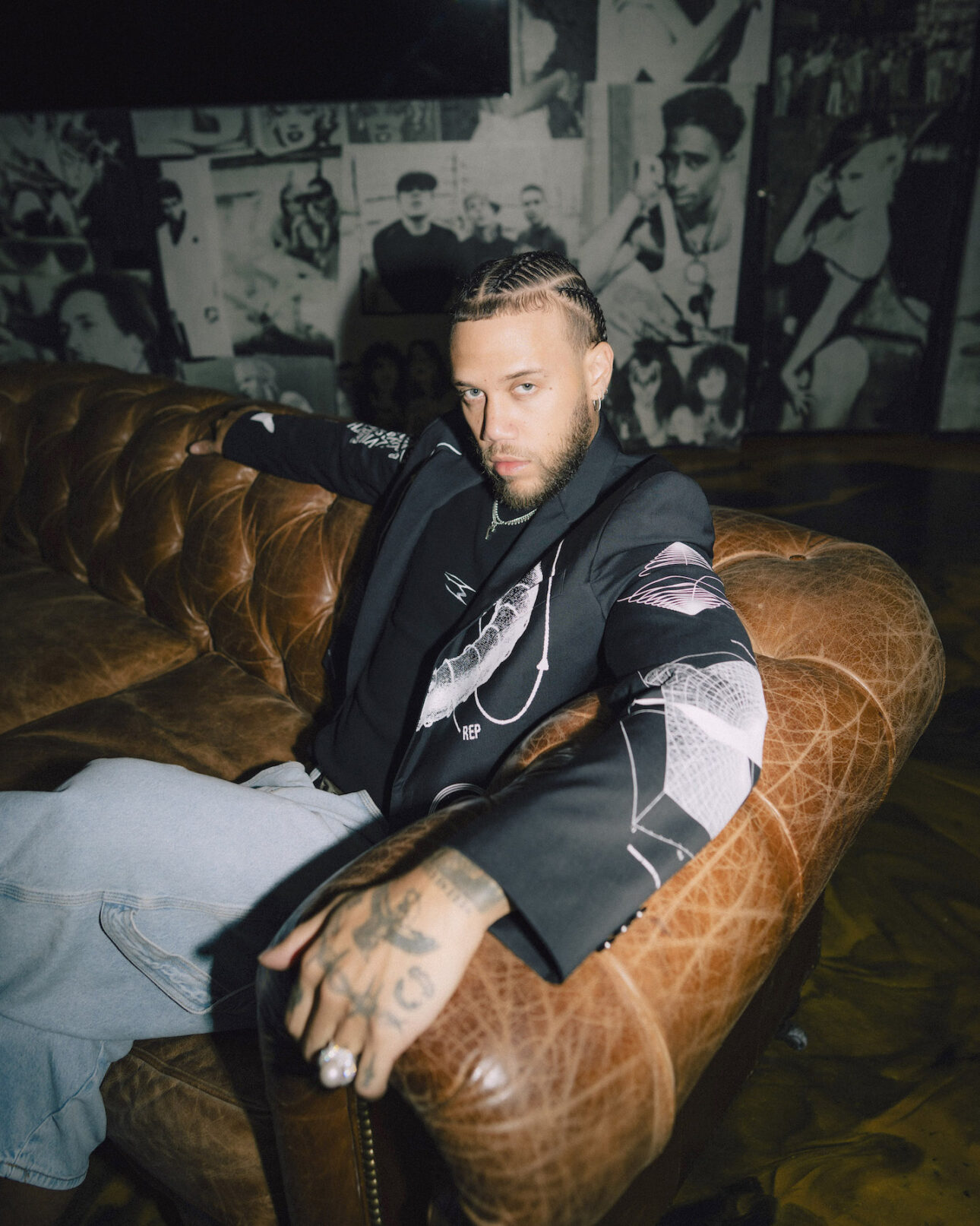
JHAYCO thinks the palm reader is right about everything. We’ve just left the psychic’s storefront —a tiny room that smells strongly of cigarettes—and are standing on a nearby curb underneath the Williamsburg Bridge, discussing the reading. He is dressed in black leather pants, boots that peek out from underneath, and a tight white T-shirt, and is chatty and personable — and attentive when he speaks.
More from Spin:
- R&B Artist Lekan Wants to Help Us and Heal Us
- Patti Scialfa Reveals Myeloma Diagnosis In E Street Band Film
- Kendrick Lamar Set For Super Bowl LIX Halftime Show
I’m initially skeptical of the palm reader’s assessments: Most of her insights were vague affirmations that almost anyone would like to believe. She told JHAYCO that he’s an honest person, that he was born to help others, and that negative energy around him is draining his spirit. But, he reminds me, she also detailed the tribulations of his romantic and familial life with uncanny detail. When she ended the session with an assertion that a $150 crystal would help him with a spiritual blockage, he mentioned that he already had a similar one but politely agreed with her and bought it.

The Puerto Rican reggaeton star cultivates a deep sense of spirituality that drives his work. Earlier in the day, at a late lunch at Manhattan Mexican restaurant Jajaja, he told me that he realized he wanted to be a musician at age 10. He said he had been searching for his life’s purpose since he was 7 years old and credits his level of early focus to a strong spiritual memory of his past lives. He said a different psychic told him that this childhood interaction was a moment of ascension.
Shortly after encountering the Morris record, JHAYCO asked his father to explain the structure of a song to him and immediately started writing music.
From there, things moved quickly. At age 14, he started working as a producer, and by 16, he was writing songs for major artists like Zion & Lennox and Tito El Bambino. He’s since co-written music for Ozuna and Cardi B, including parts of Cardi’s hit “I Like It.” It’s a process that comes easily to him, he says, because of his eclectic taste in music and his ability to understand and imitate anyone’s style. “I’ve always had diverse taste,” he says. “You’re never going to see me dressing the same. Sometimes I make reggaeton, sometimes I make trap, sometimes I do deep house. It’s just embedded in me. I love diversity, and I am a hacker. That’s my talent. I analyze everybody’s flow until I hack it, and I just know how to do it perfectly.”

When it comes to his own music, he makes an effort to understand and hone in on the unique elements of his song composition and delivery—the dynamism of his flow and the double or triple entendres that he writes—to keep his work distinct from the songs he writes for other artists. In 2019, he broke out with “No Me Conoce” from his second album, which took the top spot on the Puerto Rican and Dominican Republic charts, peaking at No. 71 on the Billboard Hot 100 with its Bad Bunny and J Balvin remix. The accompanying music video now has over 2 billion views.
He has also collaborated with Skrillex and Peso Pluma, and has seen a number of other tracks, including “Dakiti” and “Tarot,” go viral. In 2021, he performed alongside Bad Bunny at the Grammys. For the last five or so years, he has widely been regarded as one of the most exciting and influential trap and reggaeton artists to watch.
With his newest album, Le Clique: Vida Rockstar (X), he wanted to expand the scope of his music. He traveled to Paris, Madrid, Puerto Rico, Miami, and Los Angeles to make the record and pulled inspiration from the sounds and experiences his travels brought his way—the deep house he heard in Ibiza, trap music that reminds him of his favorite spots in Miami. The resulting album is eclectic and energetic, full of musical left turns. It opens with propulsive pop-punk track “Vida Rockstar” and, a few songs later, transitions into a simmering deep house groove on “En La Bentley.” “Passoa,” a dancehall collaboration with Columbian artist Kapo, slows down and makes space for reflection, yearning, and regret over an ending romantic relationship.
JHAYCO attributes this sonic experimentation throughout the album, and even in the course of one song, to the varied moods and aspects of his personality. “I’m addicted to feeling,” he says. “I go through so many emotions in a day. I’m a different person at night than I am in the day. So that’s why there’s often three different songs in one. I have to feel a lot every day. I can’t have you feel one type of way for a whole song. I like surprising people.”

JHAYCO started therapy as he was working on the project. He grew up between Puerto Rico and New Jersey and credits the move with giving him that eclectic music taste—he found jazz and rap when he moved to the U.S.—and with preparing him for his globe-trotting life. But he says that growing up away from his family was difficult. At the time, and since, he turned to music as a coping mechanism.
“Music was my parent,” he says. “That was what made me feel safe. I was really quiet. I didn’t have a lot of friends. I was moving every two years. I was always the new kid. So music is what really was there for me every time. [A few years ago] it got to the point where it was really draining me because everything was music-centered.”
So he used therapy as a means to discover other interests and ways of processing his emotions. He learned to spend time alone and be content with his own company and to comfort himself.
He describes himself as weird at one point. When I ask him what he means by that, he asks me, “What do you think I do during my day?”
“Record music? Do press like this?” I ask.
He asks again: “No… what do you think I do for fun?”
“Swim? Go out?”
“I like coffee. I like museums. I like movie scores. I love Hans Zimmer. I really like everything that has to do with feelings.” JHAYCO is intent on naming and nurturing these artistic pursuits. Much of the album is about his romantic and sexual relationships, but the settings of the tracks often hint at these broader interests. He’s said that “Viene BASQUIAT…” is an ode to his love of film and art. And “Passoa” was inspired by the freedom he feels on the beach and on the open water, “the peacefulness I feel while being on a boat makes me dream bigger,” he says.
When I ask him what the rock star life is to him, he says, “It’s really owning your craft, giving respect to art, and being on point with everything.” Then he adds, with a smile, “I feel like nobody can be a better Latin rock star than me.”

To see our running list of the top 100 greatest rock stars of all time, click here.


